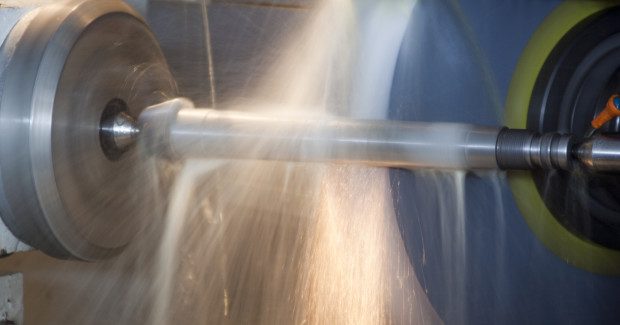Save Thousands with a Simple $30 Test
Most shops don’t think about machinery fluids and lubricants until they have a problem. Then the machine tool goes down, production is lost, parts fail . . . here’s how a little maintenance can go a long way.
Posted: September 5, 2015
Most manufacturers don’t think about machinery fluids and lubricants until they have a problem. But those problems can be expensive: machine tool downtime, loss of production, part failure . . . all by-products of a problem that could have been prevented with a simple $30 test.
That’s right: $30.
That’s all it costs to test the condition of your machine oil, $60 if you do it twice a year. For $30, you can test your machine oil for additives, viscosity, oxidation, water content, wear materials and other contaminants that could damage the machine and hurt production performance. In today’s hyper-competitive business environment, the idea is to be efficient and cost effective. Why switch out oil unless you have to? I know of one shop that has used the same oil in a machine for 12 years and, with regular testing, shows that it is still in good shape.
The key to successful lubricant testing is to conduct periodic testing every six months to a year depending on the type of machine. A single data point doesn’t tell you anything; you need to monitor the overall trend of the lubricant quality. Quality lubricant test procedures watch for a threshold to be breached, a definitive increase in wear particles, changes in viscosity, or other types of contamination or quality breakdown. Until that threshold is reached, you may just need to top off the oil or filter it. Testing can also prevent unnecessary lubricant changeouts when the unexpected happens.
There was another shop whose new equipment came with a defective heat exchanger that caused water contamination in more than $10,000 of oil. The initial reaction was that the oil was ruined and needed to be replaced. However, we tested the water-logged oil and determined that it could be suitable for continuous service if the moisture was removed. Processing the oil through a specific filtration process was a lot less expensive than purchasing $10,000 in new oil.
Lubricant testing can also provide insight into whether a gear box, bearing, hydraulic pump, or other part is failing. As the surfaces of your machine make contact, those surfaces may wear and contaminants will appear in the oil. An increase in such contaminants over time can indicate that a part of the machine is going bad. This gives you time to schedule a part replacement before the machine breaks down entirely. Lubricant testing proves that “beware of cheap oil” is true. If you drove a BMW or a Mercedes, would you put the cheapest gasoline you could find in it? Or would you purchase the recommended premium gas so that it ran efficiently and improved the longevity of your car?
The manufacturing industry created lean operations. We know better than anyone how to get the most production out of anything. Yet we sometimes do the equivalent of putting cheap gas in our high-end cars by putting cheap, non-branded oil in a $2 million piece of equipment. Monitoring the oil of our customers for the past several years has proven to us that cheaper lubricant products often don’t hold up over time. Testing shows it breaks down faster; degradation can begin to be seen in as little as six months. Shops that use cheaper, non-branded oil have had to change it on a more frequent basis — an action that is often more expensive in the long-term.
Our advice: purchase quality oil for a quality piece of machinery. The bottom line here is that lubricant testing can save you money. Machine tools don’t make money unless they’re operating. Inexpensive, periodic lubricant testing can help you identify a problem before it happens. A little preventative maintenance can go a long way to achieve the production goals of your shop.
















